This article was co-authored by Claudia Carberry, RD, MS and by wikiHow staff writer, Megaera Lorenz, PhD. Claudia Carberry is a Registered Dietitian specializing in kidney transplants and counseling patients for weight loss at the University of Arkansas for Medical Sciences. She is a member of the Arkansas Academy of Nutrition and Dietetics. Claudia received her MS in Nutrition from the University of Tennessee Knoxville in 2010.
There are 14 references cited in this article, which can be found at the bottom of the page.
This article has been viewed 16,974 times.
It can be tricky to find the right balance between eating healthy and enjoying what you eat. If you find yourself feeling like you are living to eat instead of eating to live, take some time to build a healthier relationship with food and eating. Nourish your body and improve your quality of life by eating foods that are nutritious and healthful. If you’re looking for a structured diet plan that can help you improve your health and develop better long-term eating habits, try the “Eat to Live” diet created by Dr. Joel Fuhrman, M.D.
Steps
Redefining Your Relationship with Food
-
1Be mindful of what it feels like to be hungry (or full). Next time you go a while without eating (e.g., between lunch and dinner), take a few moments to sit quietly and make note of the sensations in your body. If you’re really hungry, you may notice growling or rumbling in your stomach, hunger pangs, or tiredness, shakiness, and irritability (due to low blood sugar).[1] Likewise, pay attention to the sensations you feel while you are eating, so that you can stop when you are satisfied (and not over-full).
- When you’re too full, you may feel bloated, uncomfortable, or even nauseated.
- It’s easy to lose touch with your body’s natural hunger and satiation signals if you either overeat or deprive yourself of food on a regular basis.
-
2Assess your emotional state before you eat. If you feel the urge to eat but aren’t feeling any physical signs of hunger, stop and ask yourself what you’re feeling. Sometimes you may want to eat in response to an emotional need—for example, if you are feeling bored, sad, angry, or stressed out. If you identify an emotional culprit, look for a way to address what you are feeling without reaching for a snack.[2]
- For example, if you’re feeling sad about something, try calling a supportive friend or writing about your feelings in a journal.
Advertisement -
3Avoid the urge to eat just because food is in front of you. Sometimes, your desire to eat may be a simple response to an environmental cue, like that big box of donuts sitting in the break room. If you’re fixating on a tempting snack but not really feeling hungry, try distracting yourself with something else (like playing a game on your phone).[3]
- If you keep snacks around your home, put them away in places where you won’t see them every time you walk into the room. That way, you won’t be tempted to eat them unless you’re actually hungry.
-
4Take time to enjoy your meals. Try not to multitask during meals or scarf down your food on the go. Instead, sit down to eat without distractions and really focus on the food. Think about the flavors and sensations you are experiencing as you eat. This will make eating more satisfying and enjoyable, and also help you be more aware of the messages your body is sending you while you eat.[4]
- Use all your senses as you eat. Admire the way the food looks and smells before you take a bite. Notice the way it feels as well as how it tastes.
- For example, if you’re eating an apple, don’t just pay attention to the sweet/tart flavor. Notice the crisp sensation that you feel when you bite into it and the way the juice floods into your mouth when you chew.
-
5Eat what you crave, but stop when you’re full. Having a healthy relationship with food doesn’t have to mean depriving yourself of treats. If you’re actually hungry and you crave a chocolate chip cookie, go for it. Just pay attention to what your body is telling you, and only eat enough to satisfy your hunger.[5]
- Allowing yourself to eat your favorite decadent desserts or comfort foods now and then will help you feel less tempted to binge on them.
-
6Find fulfilling ways to stay active. If you don’t enjoy exercising, look for ways to get yourself moving that don’t feel like a chore. For example, you might try dancing, playing a sport you like, doing work in the garden, or going for a walk with a friend. That way, you can burn calories without feeling like you are punishing yourself for enjoying your food.[6]
- In addition to helping you stay fit, doing fun physical activities can boost your confidence and improve your mood. It’s also a great distraction when you’re tempted to eat out of boredom.
-
7Try to let go of guilt associated with eating. If you find yourself criticizing your eating choices, stop and address your inner critic. Gently remind yourself that you are not what you eat, and that eating certain things does not make you bad, weak, or a failure. Once you break the habit of chastising yourself for eating “bad” foods, you will find yourself less fixated on those foods (and less likely to binge on them).[7]
- Resist the temptation to criticize others for their food choices, too. If you make an effort to stop speaking negatively about food and eating, it will be easier to change the way you think about it.
- If someone else criticizes you or tries to make you feel guilty about what you’re eating, stand up for your decision without apologies or excuses. It’s your right to decide what you eat. For example, if someone says, “Are you really going to eat that?” you might say, “I sure am! It’s delicious!”
Making Healthy Food Choices
-
1Eat 5 portions of fruits and vegetables every day. Ideally, fruits and vegetables should make up a little over 1/3rd of what you eat every day.[8] In order to get a good range of essential vitamins, minerals, and other nutrients, select your fruits and veggies in a rainbow of colors.[9] Fruits and vegetables are also an important source of dietary fiber.
- About 3 ounces (85 g) of fresh, frozen, or canned fruit or vegetables makes 1 portion. If you’re eating dried fruit, 1 portion is about 1 ounce (28 g).[10]
- Another way to ensure you are getting a good quantity of fruits and vegetables is to fill about half your plate with them at every meal.
- Make sure to incorporate a wide variety of fruits and vegetables into your diet, such as leafy greens, legumes (e.g., beans, peas, and lentils), members of the onion and garlic family, seeds and nuts, berries, and citrus fruits.[11]
-
2Incorporate lean protein into your diet. Healthy proteins give you energy and help you build muscle. Good sources of protein include poultry breast, fish, eggs, soy products (such as tofu), nuts, peas, and beans. The amount of protein that will benefit you the most depends on factors like your age, weight, and activity level, but you can find basic guidelines here: https://www.choosemyplate.gov/protein-foods.
- If you’re not sure how much protein you need, talk to your doctor or a dietitian.
- If you’re a vegetarian or vegan, you can get the protein you need from plant sources, such as legumes and soy.
- Dairy products are also good sources of both protein and calcium.
-
3Have complex carbohydrates with your meals. Although carbs tend to get a bad rap, high-quality carbohydrates are an important source of energy for your body. To make sure you are getting enough carbs, try filling about ¼ of your plate with healthy sources of carbohydrates, such as whole grains.[12]
- Whole grain products, such as whole wheat bread and pasta, brown rice, quinoa, and oatmeal made from whole oats, are all good sources of carbohydrates.
- You can also get high-quality carbohydrates from vegetables (such as beans and peas) and fruit.
- Processed and refined carbohydrates, such as those found in white bread, cookies, and pastries, are less healthy.
-
4Choose healthy sources of fat. While some types of dietary fat are bad for you, others are actually essential for your health. Incorporate healthy sources of fat into your diet, such as olive oil, canola oil, nuts and nut butters, avocados, and fish.[13]
- The total amount of fat that you should be eating every day depends on factors like your age, sex, weight, and the total number of calories in your diet. Most adults should get about 20-30% of their total calories from fat.
-
5Pick foods that are prepared in healthy ways. The way a food is prepared can make a big difference in how healthy and nutritious it is. Whether you are dining out or making your own food at home, you can get the most out of your meals by eating foods that are:[14]
- Steamed, broiled, grilled, or roasted instead of fried. If you do eat fried foods, go for options that are cooked in healthy oils, such as olive or canola oil.
- Cooked for a short period of time in relatively little water. Boiling vegetables for too long can cause them to lose some of their nutrients.
- Flavored with a variety of herbs and spices instead of heavily salted.
- Relatively unprocessed (i.e., not refined, filled with preservatives, or prepared with a lot of added sugar or salt).
Following the “Eat to Live” 6-Week Diet
-
1Focus on eating “G-BOMBS” (Greens, Beans, Onions, Mushrooms, Berries, Seeds). While you’re on the “Eat to Live” diet, base your daily meals around the “G-BOMBS.” These foods are high in nutrients and low in calories, and also help boost your immune system and lower inflammation. The G-BOMBS include:[15]
- Greens, such as kale, spinach, bok choy, romaine lettuce, broccoli, and brussels sprouts.
- Beans and other legumes, such as peas, lentils, and chickpeas. You can also eat soy-based products, such as tofu.
- Onions and members of the onion family, such as leeks, garlic, chives, shallots, and scallions.
- Mushrooms, including white, cremini, Portobello, shiitake, and oyster mushrooms.
- Berries, such as strawberries, blueberries, blackberries, and raspberries.
-
2Limit your eating to mealtimes. While you are on the “Eat to Live” diet, do your best to cut out snacking between meals. Give yourself at least 13 hours between dinner and breakfast, so that your body will be encouraged to burn fat while you sleep.[16]
- You can eat unlimited raw vegetables while you're on the diet. For example, salads, baby carrots, tomatoes, broccoli, cauliflower, celery, and sliced zucchini can be eaten raw in any amount.
- During meal times, eat until you are full! Be sure to listen to your body’s cues and stop when you feel satisfied. However, make sure you don't eat foods that aren't included on the diet, such as meat and dairy. Don't exceed your daily limits of starchy vegetables, grains, avocado, seeds, nuts, dried fruit, and flaxseed.[17]
-
3Cut out meat, eggs, and dairy. The "Eat to Live" diet doesn't include meat, eggs, or dairy products. Get your protein from beans, legumes, nuts, and seeds. This includes tofu, which is made from soy beans.
- Since processed foods aren't included on the diet, don't replace meat with a processed meat replacement product.
- While you're on this diet, don't eat more than 1 ounce (28 g) of nuts or seeds.[18]
-
4Avoid sweets, oils, salt, and processed foods. Don’t eat foods made with refined grains or sugars, such as pastries or bread made with white flour. Eat most of your vegetables raw, and when you do cook, choose techniques that do not require oil (such as grilling, baking, steaming, or sautéing in water).[19]
- If you are used to eating a diet rich in sugar, fat, oil, or salt, you may experience some discomfort (such as headaches or generally feeling unwell) when you stop eating these things. After about a week, your body will begin to adjust, and your cravings for these foods will diminish.
- Even without oil in your diet, you can still get the healthy fats you need from plant sources, such as avocados, whole olives, seeds, and nuts.
-
5Season your food with flavorful herbs and spices. Instead of pouring on the salt or using oil, enhance your food with other seasonings, such as garlic powder, cumin, pepper, oregano, and turmeric. For a ready-made blend of flavors, look for salt-free seasoning mixes.[20]
- You can also top your salads with sodium- and oil-free dressings, or use simple flavor enhancers like a splash of vinegar or lemon juice.
- Nut-based dressings are a great option when you’re going oil-free. You can either purchase them or make your own, like this almond balsamic vinaigrette made with raw almonds, roasted garlic, balsamic vinegar, and seasonings: https://www.drfuhrman.com/recipes/1522/almond-balsamic-vinaigrette.
-
6Try the diet for 6 weeks. During the 6 weeks of the diet, experiment with preparing your food in different ways while conforming to the rules of the diet. During this time, you will probably lose weight, and you may see improvements in your overall health. Your body will also begin to acclimatize to your new eating habits, and you may find that you develop a long-term preference for unprocessed, plant-based foods.[21]
- The 6-week “Eat to Live” plan is a weight-loss diet, but it is also meant to help you develop healthier eating habits in the long run.
- As you move beyond the 6-week plan, you might integrate small amounts of grains and lean meat into your daily diet.[22]
References
- ↑ https://health.usnews.com/wellness/articles/2016-03-11/how-to-know-if-youre-actually-hungry
- ↑ https://www.psychologytoday.com/us/blog/diet-is-4-letter-word/201405/how-do-i-improve-my-relationship-food
- ↑ https://health.usnews.com/wellness/articles/2016-03-11/how-to-know-if-youre-actually-hungry
- ↑ https://www.psychologytoday.com/us/blog/diet-is-4-letter-word/201405/how-do-i-improve-my-relationship-food
- ↑ https://www.psychologytoday.com/us/blog/diet-is-4-letter-word/201405/how-do-i-improve-my-relationship-food
- ↑ https://www.psychologytoday.com/us/blog/diet-is-4-letter-word/201405/how-do-i-improve-my-relationship-food
- ↑ https://www.health.com/food/stop-food-guilt
- ↑ https://www.nhs.uk/live-well/eat-well/
- ↑ http://www.nutritionaustralia.org/national/resource/eat-rainbow
- ↑ https://www.nhs.uk/live-well/eat-well/5-a-day-what-counts/
- ↑ https://www.verywellfit.com/foods-you-should-eat-to-live-longer-2223533
- ↑ https://www.hsph.harvard.edu/nutritionsource/carbohydrates/
- ↑ https://my.clevelandclinic.org/health/articles/11208-fat-what-you-need-to-know
- ↑ https://www.takingcharge.csh.umn.edu/enhance-your-wellbeing/health/diet-nutrition/prepare-food-health-and-safety
- ↑ https://www.drfuhrman.com/library/eat-to-live-blog/62/the-healthiest-anti-cancer-foods-g-bombs
- ↑ https://www.drfuhrman.com/get-started
- ↑ https://www.webmd.com/diet/a-z/eat-to-live-diet-review
- ↑ https://www.webmd.com/diet/a-z/eat-to-live-diet-review
- ↑ https://www.drfuhrman.com/get-started
- ↑ https://www.drfuhrman.com/get-started
- ↑ https://www.drfuhrman.com/get-started
- ↑ https://health.usnews.com/best-diet/nutritarian-diet
About This Article
To eat to live, base your meals around greens, beans, onions, mushrooms, berries, and seeds, which are all nutrient-rich foods that can boost your immune system and lower inflammation. Also, try to avoid processed foods and foods that are high in sugar or salt. If you're not already, limit yourself to 3 meals a day and stop snacking in between meals. When you do eat, eat as much as you like, but try to stop eating once you feel satisfied and before you feel overly full. To learn how to redefine your relationship with food so it's easier to eat to live, keep reading!
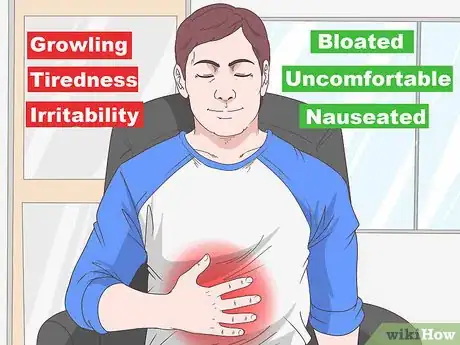

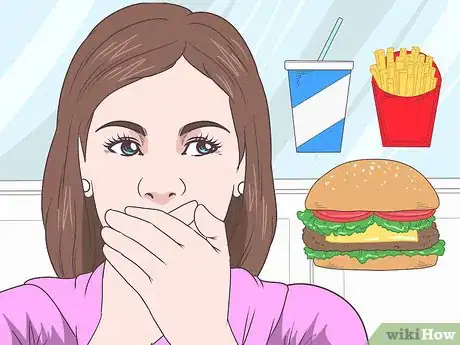

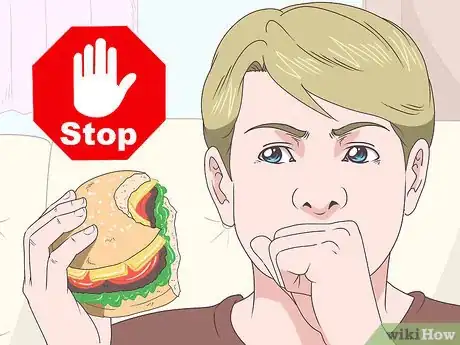



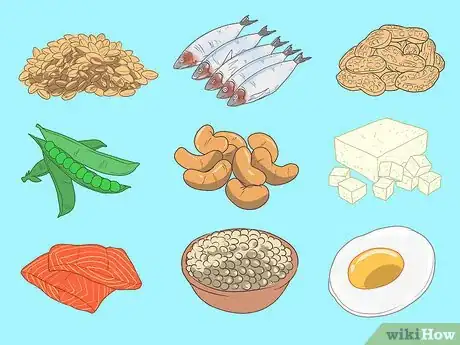


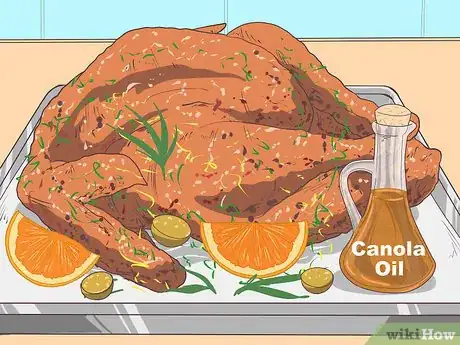

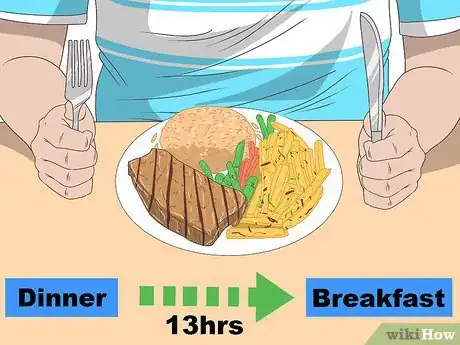
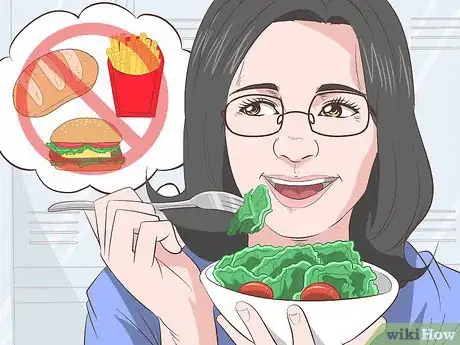



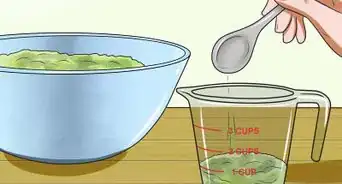

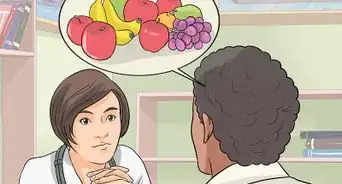





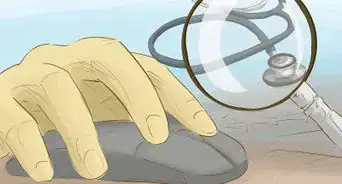


















































Medical Disclaimer
The content of this article is not intended to be a substitute for professional medical advice, examination, diagnosis, or treatment. You should always contact your doctor or other qualified healthcare professional before starting, changing, or stopping any kind of health treatment.
Read More...